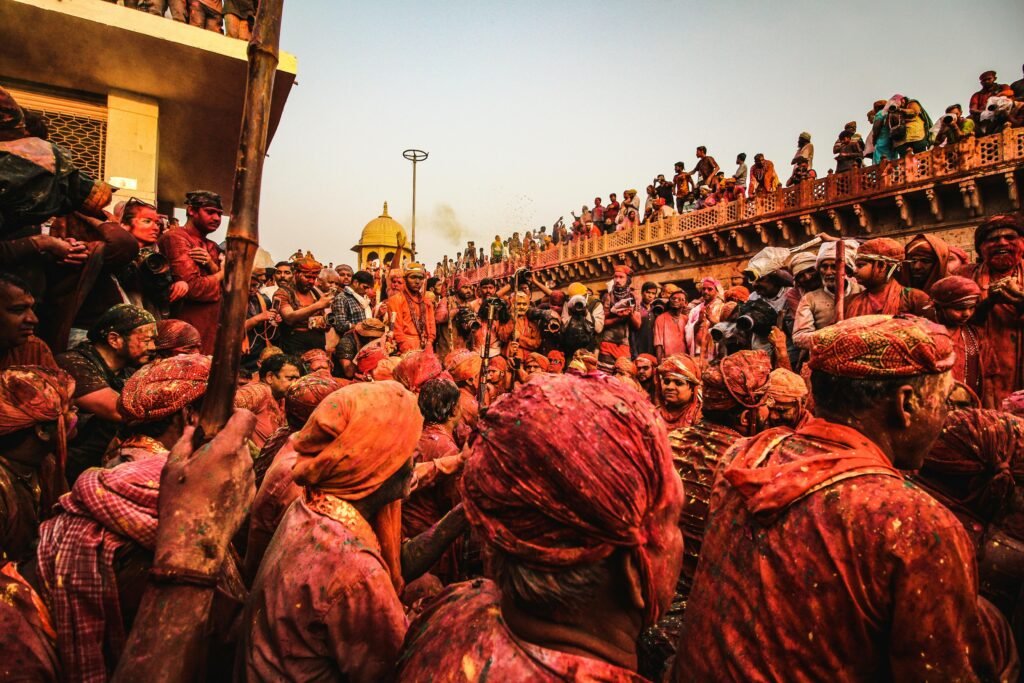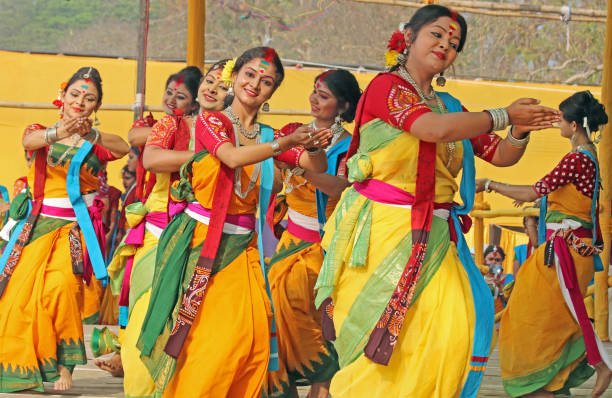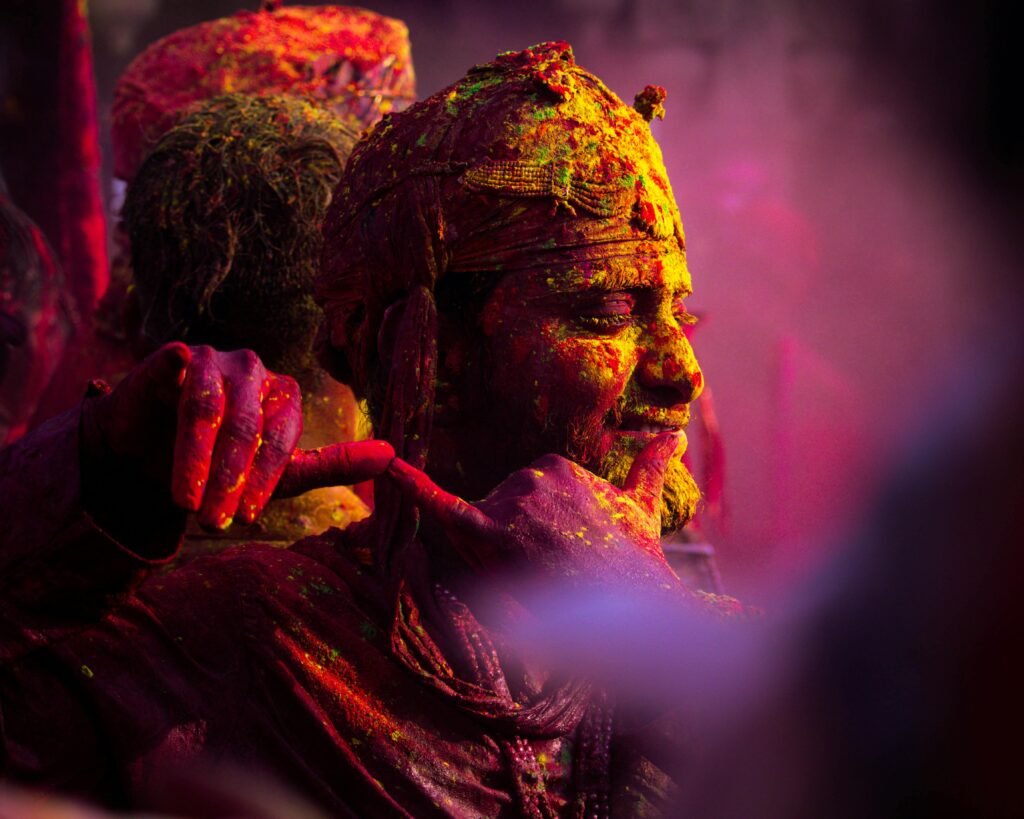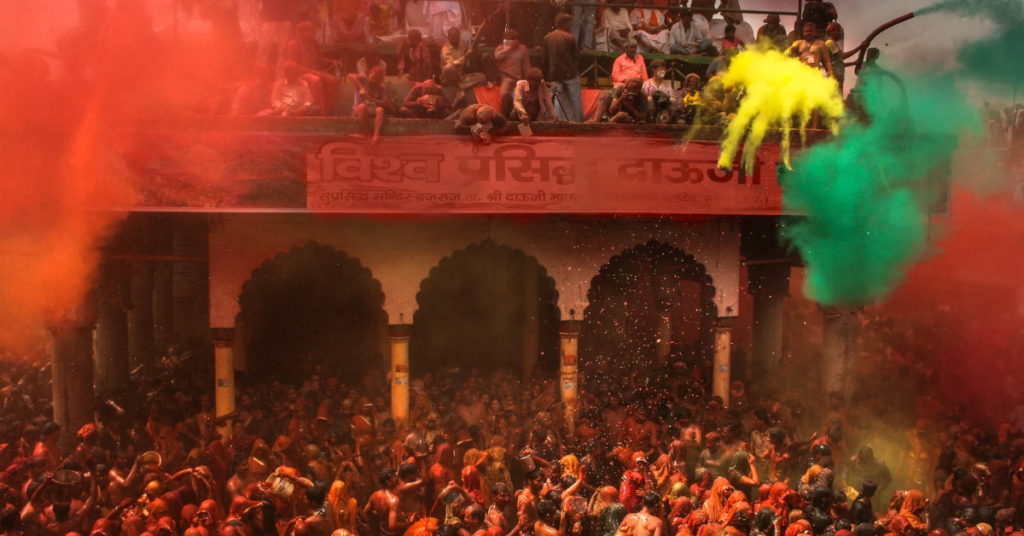Holi, the festival of colours, is one of India’s most vibrant festivals, celebrated with great enthusiasm across states and regions. While the common image of Holi involves people joyfully throwing coloured powders, regional Holi traditions across India bring to the fore the differing unique cultural, historical, and spiritual flavours of this reverred festival.

From the elegance of Basant Utsav in Bengal to the fiery Holika Dahan in North India and the warrior-style Hola Mohalla in Punjab, each region adds its distinctive touch. Let’s explore the various Holi traditions across India and their cultural significance.
The Mythological and Historical Significance of Holi
Holi finds its roots to over thousands years ago, with mentions in ancient Hindu scriptures like the Puranas, Jaimini’s Purva Mimamsa-Sutras, and Kathaka-Grhya-Sutra. The festival represents:
• The victory of good over evil (as per the legend of Prahlad and Holika)
• Holi marks the arrival of spring and the end of winter
• This festival also strengthens social bonds and harmony
Key Legends Associated with Holi
1. Holika and Prahlad – The origin of the Holi is thought to be from the time when Lord Vishnu saves Prahlad from his tyrant father Hiranyakashyap, resulting in Holika’s burning.
2. Radha and Krishna – The colour playing tradition is inspired by Lord Krishna’s playful acts with Radha and the Gopis.
3. Kamadeva’s Sacrifice – In South India, Holi is linked to Lord Shiva’s incineration of Kamadeva (God of Love), later restoring him to life.
Unique Holi Celebrations Across India
1.Basant Utsav & Dol Jatra – Bengal’s Graceful Holi
Holi in West Bengal is distinctively artistic, musical, and spiritually significant. The celebration is observed across the state under different names.
Basant Utsav (Spring Festival) – Inspired by Rabindranath Tagore

Key Highlights:
• Celebrated in Shantiniketan, Kolkata, and other cultural hubs
• People wear yellow attire, symbolizing spring and renewal of season as part of holi traditions
• Holi is played with dry Abir (gulal)
• Accompanied by Rabindra Sangeet (Tagore’s songs), folk dances, and poetry recitals
Dol Jatra – The Traditional Holi of Bengal
• Involves processions of Lord Krishna’s idols carried on beautifully decorated palanquins
• Devotees apply Abir (colored powders) on Krishna’s idols and fellow devotees.
• Devotees gather and engage with Bhajans (devotional songs), dances, and feasts.
• In Nabadwip and Mayapur, Holi has strong ties to Gaudiya Vaishnavism and Chaitanya Mahaprabhu’s legacy.
Did you Know?
Bengal produces over 2,000 tons of organic Abir annually, with natural colours made from Palash flowers, turmeric, and rice starch.
2. Lathmar Holi – The Playful Battle of Barsana & Nandgaon (Uttar Pradesh)
In Barsana and Nandgaon (Krishna’s birthplace), Holi traditions include Lathmar Holi – which transforms into a dramatic mock battle, re-enacting Radha and Krishna’s playful interactions.

Key Highlights:
• Women “beat” men with sticks (lathis), playfully defending Radha’s honor.
• Men protect themselves using shields in a humorous way.
• The event attracts over 50,000 spectators annually, making it a major tourist attraction.
Did You Know?
Barsana is home to India’s only temple dedicated to Radha instead of Krishna.
3. Hola Mohalla – Punjab’s Warrior-Style Holi
Established by Guru Gobind Singh in 1701, Hola Mohalla is a Sikh warrior festival celebrated a day after Holi.

What Makes Hola Mohalla Unique?
• Nihang warriors showcase Gatka (Sikh martial arts), sword fighting, and horseback stunts.
• Kavishri (poetic recitations) narrate heroic tales of Sikh bravery.
• Langars (community kitchens) serve free meals to thousands of devotees.
Unlike colour-filled Holi celebrations, Hola Mohalla emphasizes courage, discipline, and devotion.
4. Yaosang – Manipur’s Six-Day Holi Extravaganza
Holi in Manipur blends Hindu traditions with local culture, celebrated as Yaosang, a six-day festival.
Highlights of Yaosang:
• Thabal Chongba, a traditional moonlight folk dance, marks the beginning of celebrations.
• Children collect donations (Naka Theng) from homes, similar to trick-or-treating.
• The grand Holi celebration on the fifth day features colour play and cultural performances.
Did you know?
Manipur sees an 80% surge in tourism during Yaosang, with visitors eager to experience its unique fusion of cultures.
5. Shigmo – Goa’s Holi with a Carnival Twist
Holi in Goa is called Shigmo, blending spring festivities with Goa’s Portuguese carnival influence.
What Happens During Shigmo?
• Streets come alive with elaborate parades, folk dances, and musical performances.
• Farmers celebrate the end of the harvest season with processions.
• Fire dances in temples honour Hindu deities.
Shigmo is Goa’s biggest cultural festival, drawing thousands of tourists.
6. Rang Panchami – Maharashtra & Madhya Pradesh
Unlike Holi, which is widely celebrated across India, Rang Panchami is observed five days after Holi, mainly in Maharashtra, Madhya Pradesh, and some parts of North India. It marks the culmination of Holi festivities and is seen as a spiritual cleansing ritual rather than just a colour play event.
Madhya Pradesh (Indore & Malwa Region):
• Indore hosts a grand Rang Panchami procession, where colour is sprayed using water cannons on devotees. This unique celebration, called the “Ger” procession, attracts thousands of people and is considered a cultural heritage event of the city.
• Malwa region follows traditional Rang Panchami rituals, where temples organize special prayers, and people celebrate with dry colours.
Maharashtra (Pune & Rural Regions):
• In Maharashtra, Rang Panchami is associated with spiritual purification and the victory of positive energy over negative forces.
• Many rural communities avoid playing colours on Holi and instead celebrate on Rang Panchami, making it a major festival in these areas.
Spiritual Significance:
Rang Panchami is rooted in Hindu beliefs of invoking cosmic energies, ensuring harmony and prosperity. It is celebrated with devotional songs, folk dances, and temple offerings.
Holi in Numbers: Interesting Facts & Statistics
• Holi tourism in India contributes over $10 billion annually, with Vrindavan and Mathura as prime attractions.
• India produces 100,000+ metric tons of Holi colours every year, with growing global demand.
• The market for organic Holi colours has grown by 60% in the last five years.
• Holi is celebrated in over 30 countries, including the USA, UK, Canada, and Australia.
Modern Trends & Environmental Impact
Eco-Friendly Holi
• Organic colours made from flowers, turmeric, and henna are replacing synthetic dyes.
• Water conservation efforts promote dry Holi celebrations in drought-prone areas.
Global Influence of Holi
• Holi celebrations in London, New York, and Sydney attract thousands of participants
Conclusion: A Celebration of Cultural Unity
Holi traditions are more than just colours—it is a festival of India’s rich diversity, history, and unity. Whether it’s the elegance of Bengal’s Basant Utsav, the laughter of Lathmar Holi, or the warrior spirit of Hola Mohalla, each regional Holi tradition offers a unique cultural experience.So this Holi, immerse yourself in the traditions that make India’s festival of colours truly special!
Happy Holi!


